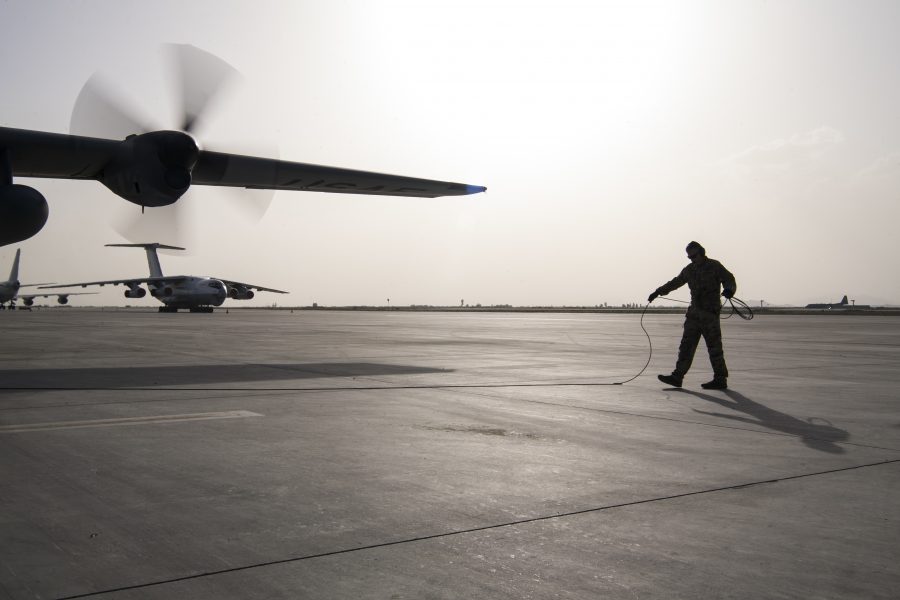The number of troops deployed to Afghanistan could increase in the coming months to enable the full withdrawal of U.S. and coalition forces, a DOD spokesman said, and it is too early to tell what the remaining contractor presence will be to continue support for Afghan forces.
President Joe Biden announced April 14 that it is “time to end the forever war” in Afghanistan, with troops beginning to leave May 1 and a full withdrawal by Sept. 11, 2021. The announcement is an extension from the prior deadline of early May, which was agreed upon as part of the 2020 U.S. agreement with the Taliban.
Still, it is “not out of the realm of the possible” that more troops will deploy in the coming months to Afghanistan to meet the needs that arise as part of the retrograde, Pentagon Press Secretary John F. Kirby said in an April 16 briefing. For example, additional engineering, logistics, and force protection forces could be needed to allow for a “safe, orderly, and deliberately planned” drawdown.
Because the original deadline was coming up soon, there were existing “preliminary plans in place” for the withdrawal that are being revisited, Kirby said. More information on the withdrawal could be expected soon, he said.
“Military leadership is working on that right now,” Kirby said, adding that “further tasking is coming from (Defense) Secretary (Lloyd J.) Austin very, very soon.”
There was a short plus-up of forces inside Iraq in 2011 as part of that withdrawal process. However, the situation is very different in Afghanistan—a different environment, and a Taliban that has publicly said it would target U.S. forces if the original schedule did not hold.
“We’ve seen their threats, and it would be imprudent for us not to take those threats seriously,” Kirby said. “… Any attack on our forces, allies, and partners as they draw down will be met very forcefully.”
U.S. officials have said the military would be postured for counter terrorism operations from “over the horizon,” outside of Afghanistan. Kirby would not provide details on what this would entail, but said there is “a wide range of capabilities at our disposal” and the Pentagon intends “to use all our capabilities in whatever mix is best appropriate to deal with that particular threat.”
In announcing withdrawal plans, Austin said the U.S. military would continue its support of the Afghan Air Force and special mission wing. The AAF, especially the A-29, C-130, MD-530, and HH-60 fleets, rely heavily on American contract support to remain operational. Kirby said it is too early to say what the remaining contract presence inside Afghanistan will be after U.S. and coalition forces withdraw.
Afghan forces have “greatly improved over the years,” but like any military, there are “capability gaps” remaining. “We are going to continue to stand by them” Kirby said.
